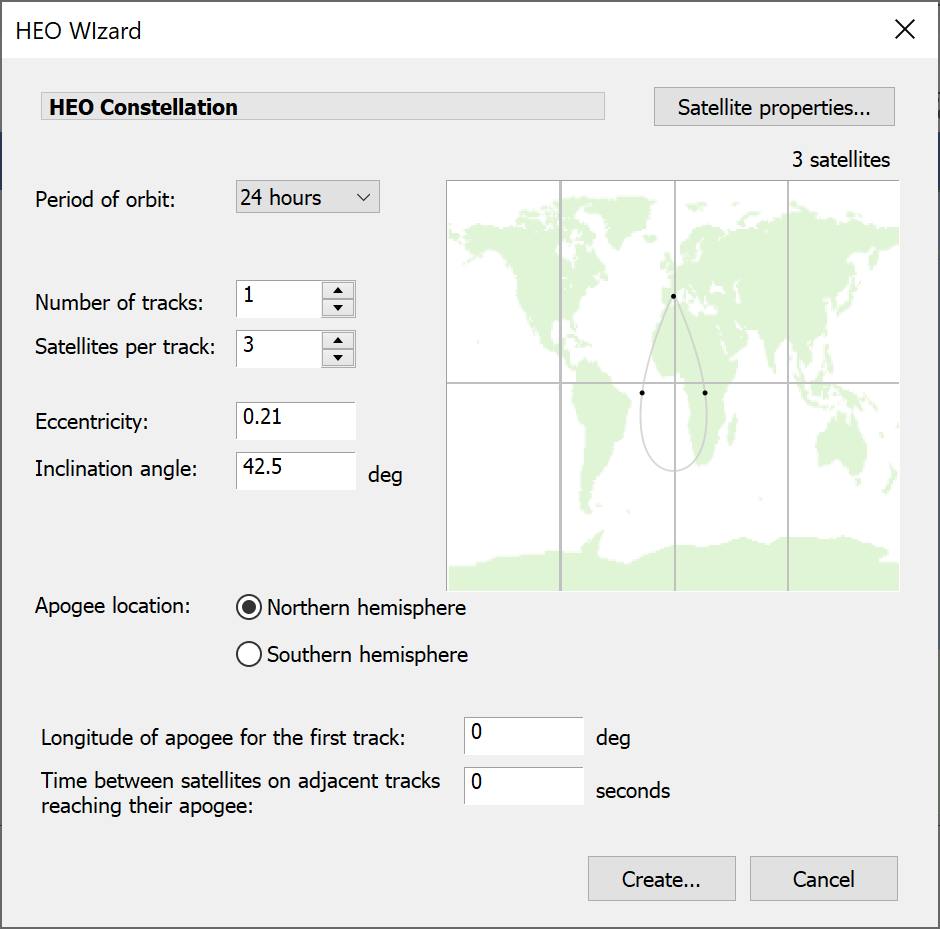HEO Wizard
The Visualyse HEO Wizard helps you define repeating ground track HEO constellations with varying numbers of ground track, orbit period and numbers of satellites per track.
The orbits that Visualyse defines are also sometimes referred to as QuasiGEO, Molniya or Tundra orbits.
Each satellite is, as usual, based on a single template station.
The HEO Wizard Dialog is shown below:

The parameters that are used to define the HEO constellation are:
- The period of the orbit
- The number of distinct ground track s
- The number of satellites per track
- The eccentricity of the orbit
- The orbital inclination angle
- The apogee location – the highest point of the orbit. The satellites move more slowly at higher altitude and so the apogee point is the location where they are often said to be QuasiGSO. For a system that will provide service to the Northern Hemisphere the apogee would be in the north.
- The longitude of the apogee of the first track – this defines the point on the earth above which the apogee will occur
- Time between satellites on adjacent track reaching their apogee. This parameter determines whether, in a multi-track system, satellites on adjacent plane are interleaved or whether they are at the same relative points in their orbits at the same time.
Having defined all these parameters Visualyse will create satellites with orbital elements that produce a single ground track for each plane – these elements are consistent with the point mass orbit propagation model.